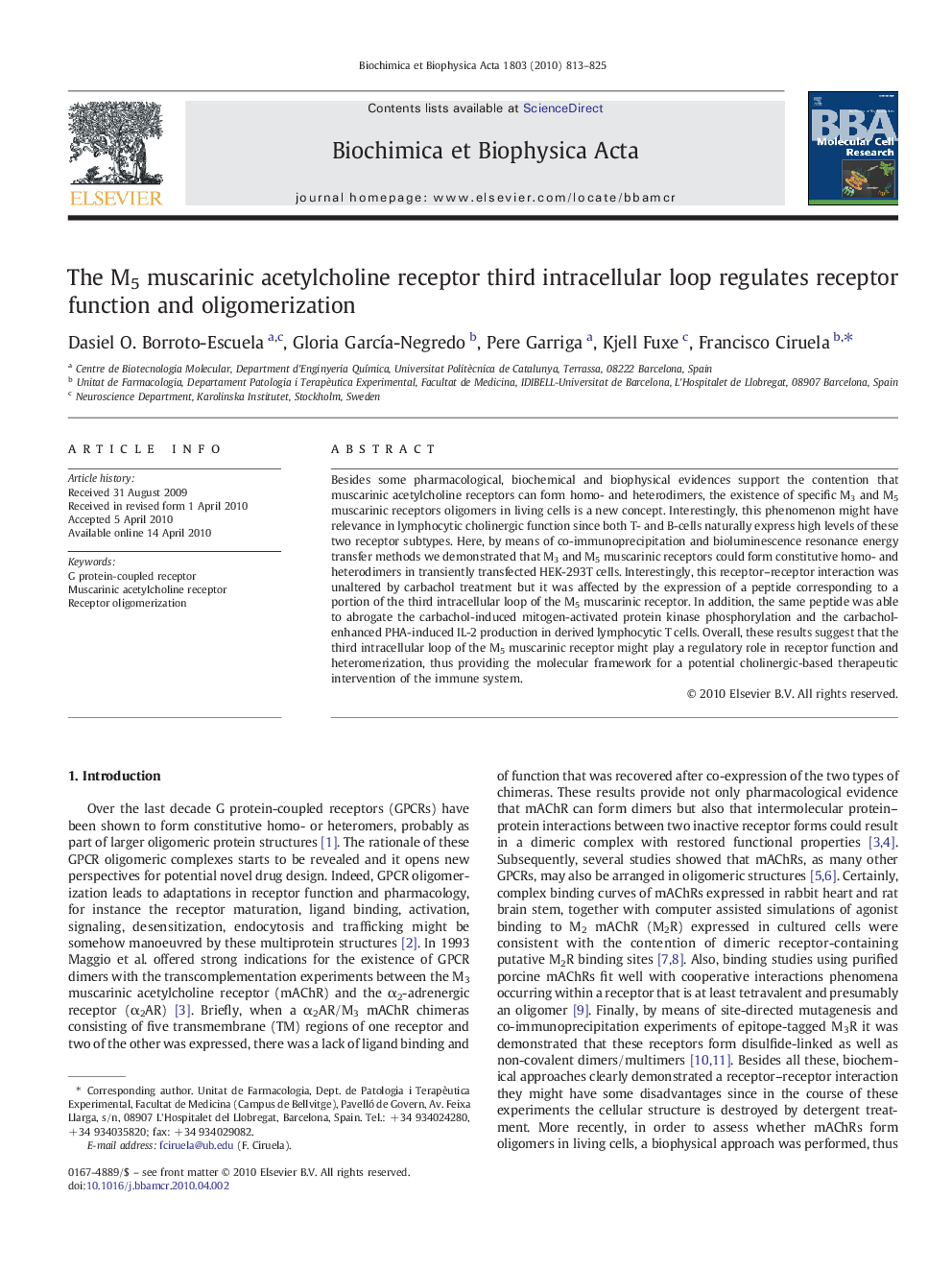| Article ID | Journal | Published Year | Pages | File Type |
|---|---|---|---|---|
| 10802908 | Biochimica et Biophysica Acta (BBA) - Molecular Cell Research | 2010 | 13 Pages |
Abstract
Besides some pharmacological, biochemical and biophysical evidences support the contention that muscarinic acetylcholine receptors can form homo- and heterodimers, the existence of specific M3 and M5 muscarinic receptors oligomers in living cells is a new concept. Interestingly, this phenomenon might have relevance in lymphocytic cholinergic function since both T- and B-cells naturally express high levels of these two receptor subtypes. Here, by means of co-immunoprecipitation and bioluminescence resonance energy transfer methods we demonstrated that M3 and M5 muscarinic receptors could form constitutive homo- and heterodimers in transiently transfected HEK-293T cells. Interestingly, this receptor-receptor interaction was unaltered by carbachol treatment but it was affected by the expression of a peptide corresponding to a portion of the third intracellular loop of the M5 muscarinic receptor. In addition, the same peptide was able to abrogate the carbachol-induced mitogen-activated protein kinase phosphorylation and the carbachol-enhanced PHA-induced IL-2 production in derived lymphocytic T cells. Overall, these results suggest that the third intracellular loop of the M5 muscarinic receptor might play a regulatory role in receptor function and heteromerization, thus providing the molecular framework for a potential cholinergic-based therapeutic intervention of the immune system.
Related Topics
Life Sciences
Biochemistry, Genetics and Molecular Biology
Biochemistry
Authors
Dasiel O. Borroto-Escuela, Gloria GarcÃa-Negredo, Pere Garriga, Kjell Fuxe, Francisco Ciruela,
